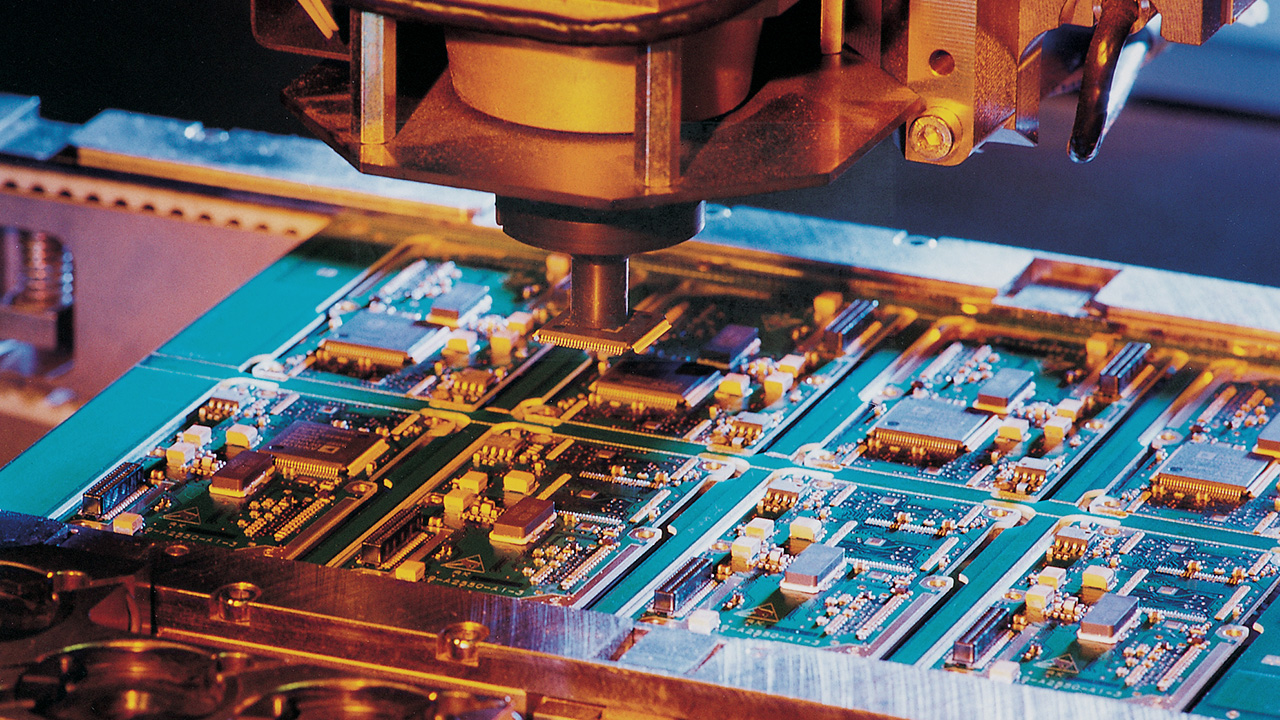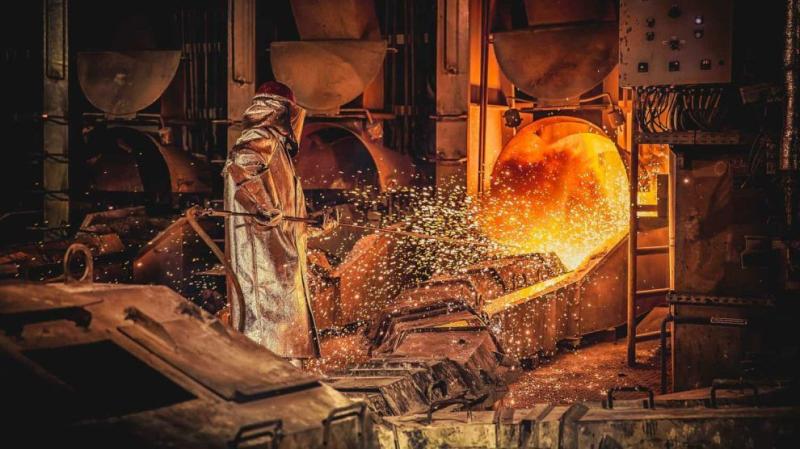
Recently, the manufacture of semiconductors, which is at the heart of present day technology, has been running wildly with rapid changes. People continue to press for small, faster, and more powerful electronic gadgets, so the semiconductor industry must find ways and means to satisfy these demands. This article considers the primary trends that shape the future for semiconductor manufacturing processes, such as new production technologies and the influence of global politics.
I. Shrinking Nodes: The Era of Advanced Process Technologies
A. Moore's Law and Beyond:
For many years, Moore's Law has driven the production of semiconductors. It states that the number of transistors on a chip will increase roughly twofold every two years. To meet these technological requirements, the manufacturers of chips have fabricated more advanced and smaller process nodes. Today, the industry is already working on 5nm and 3nm process nodes. This enables the making of chips that are tiny in size, using less power and performing well.
B. EUV Technology:
Extreme Ultraviolet Lithography is the essential technology that makes computer chips. EUV enables the creation of smaller parts on silicon wafers, allowing better accuracy and efficiency in chip manufacture. As chip makers use EUV technology, it becomes one of the keys to get the patterns of smaller shapes needed for advanced computer chips.
II. Heterogeneous Integration: Beyond Traditional Scaling
A. 3D Stacking and Packaging:
Traditional scaling is reaching its limits; hence, the industry is looking in other directions. 3D stacking and packaging have become increasingly popular, where many layers of components can fit on one chip. This stacking makes the performance of devices better, consuming less power, which also allows smaller yet stronger gadgets.
B. System-on-Chip (SoC) Evolution:
New System on Chip designs are changing the way semiconductors are manufactured. SoCs put various features onto one chip, such as processing units, memory, and communication parts. As the demand continues to rise for smaller and improved devices, SoCs are allowing and encouraging more sophisticated and powerful electronic systems.
III. Advanced Materials and Beyond Silicon
A. Beyond Silicon: Compound Semiconductors and More:
The limitations of Si-based semiconductors have driven the investigation into other materials. Compound semiconductors like GaN and SiC offer superior performance in specialized applications, such as power electronics and high frequency devices. Indeed, new materials currently under investigation by industry include graphene and 2D materials for potential use in future semiconductor technologies.
B. Quantum Computing and Quantum Dot Technologies:
The current pursuit of computing beyond the classical limit has entered into quantum computing. Quantum dot technologies are very promising in utilization based on the principle of quantum mechanics for applications such as computing, sensing, and communication. These technologies are still at the early stage and represent a potential paradigm shift in semiconductor manufacturing.
IV. Geopolitical Dynamics: The Impact on Semiconductor Supply Chains
A. Supply Chain Challenges:
The semiconductor industry works worldwide, with supply chains that go through many countries. Political tensions and trade conflicts can interrupt the making and delivery of semiconductor parts. Recent happenings, like the semiconductor shortage in 2021, highlight how the industry can be affected by global politics.
B. Resilience and Diversification:
To deal with supply chain problems, semiconductor makers are looking at new strategies to become stronger: spreading out their manufacturing plants, storing important parts, and working more with others around the world in order to reduce risks from politics.
V. Environmental Sustainability: A Growing Imperative
A. Energy Efficiency and Green Manufacturing:
The semiconductor industry faces increasingly higher demands to address its impact on the environment. With production methods becoming more power consuming, there is greater attention to using energy more efficiently and finding environmentally friendly ways of manufacturing. New materials, production techniques, and recycling ideas are considered crucial for minimizing the environmental impact of semiconductor manufacturing.
B. Circular Economy and E-Waste Management:
Electronic waste or e waste is one of the big challenges faced by the semiconductor industry. Embracing a more circular economy incorporates designing the product for recyclability and reusability. Semiconductor manufacturers are increasingly looking at responsible product design to minimize e waste, and end of life recycling initiatives.
VI. Cybersecurity in Semiconductor Manufacturing
A. Securing the Supply Chain:
As semiconductor devices are fundamental to key services and sensitive uses, the industry is increasingly afflicted by cybersecurity issues. The supply chain in semiconductors thus needs to be protected from issues such as intellectual property theft and counterfeiting of products that could be harmful. Companies and government agencies should work collectively on establishing secure cybersecurity.
B. Hardware Security:
With the advent of more sophisticated cyber threats, the need to shift focus towards hardware security has become relevant. Secure hardware enclaves and tamper-resistant design techniques are gradually becoming an essential approach for keeping sensitive data secure and maintaining safe semiconductor devices.
VII. The Future Workforce: Skills and Collaboration
A. Skills Gap in Semiconductor Manufacturing:
The rapid pace of change within semiconductor technologies necessitates a workforce with continuing skills. At the same time, there is growing concern that a shortage of skills will occur within the industry. Collaboration by schools, businesses, and government agencies is basic in resolving this challenge and ensuring an adequate supply of qualified workers.
B. International Collaboration and Knowledge Sharing:
The complex challenges facing semiconductor manufacturing require global collaboration. Knowledge sharing, collaborative research initiatives, and international partnerships are vital for advancing the industry, overcoming common obstacles, and ensuring a sustainable future for semiconductor manufacturing.
VIII. Conclusion: Navigating Complexity and Embracing Innovation
Semiconductor manufacturing is standing at a crossroads, coping with the storms of change in technology, international relationships, environmental issues, and problems with cybersecurity. The future for making semiconductors will need more openness to new ideas, collaboration, and dealing with global challenges together. While the industry is constantly evolving, it will be crucial for companies to be on track with those trends and adapt to the new situation flowing from them if their goal is to perform well in the fast shifting world of semiconductor manufacturing.
Trending Posts

Global Silver Nanoparticles Market
The global silver nanoparticles market was valued at $2.08 billion in 2020, and is projected to reach $4.1 billion by 2027, growing at a CAGR of ~17%

LNG Bunkering – Here is something you must know!
In the current scenario of growing pollution, companies are trying to adapt more and more sustainable approach that not only gives eco-friendly result

The Basic Pension Comes - Federal Cabinet Decides On the Pension Supplement
Financial security in old age is an issue that is causing stomach pains for more and more people in Germany. Low-wage earners fear the elderly. The ba

The Future of Artificial Intelligence
In recent years, the field of artificial intelligence (AI) has witnessed unprecedented growth and transformative advancements. As AI technologies

Sailing into the future with Autonomous Ships
Autonomous Vehicles (AVs) are the uproar of this era. After airways, thanks to the companies like Tesla, that people are now getting used to see drive

Rising Demand For Uninterrupted Power Supply Is Expected To Drive The Power Rental Market
Todays world is totally reliant on electric power. There are many things which are not manageable without electricity. Power rental is a concept where

Rapidly growing IT industry coupled with the trend of bringing your own device (BYOD) is expected to provide new opportunities for growth of Cloud Collaboration
Cloud collaboration is the process of sharing and co-authoring the computer-based work through cloud technology

Factcheck on UV Disinfection for COVID-19
Many regulatory authorities and bodies believe that UV disinfection technologies can play a role in a multiple barrier approach to reducing the transm

The Global Ventilator Market Grows at a CAGR of 7.75 %
The Global Ventilator Market, which was at $688 million in the year 2016, is about to double by the year 2025, and reach a value of $1,347 million. Th

Vaccination: Vaccination Against Measles is Now Mandatory in Germany
The subject of compulsory vaccination has always heated peoples minds and caused emotionally charged discussions. The latest law in this area - the ob
Recent Posts

Growth and Future Trends of the Global In-Line UV-Vis Spectroscopy Market
In-line UV-Vis spectroscopy is a powerful analytical tool widely adopted in various industries for real-time monitoring of chemical and biological processes. This market is experiencing robust growth due to its applications in pharmaceutical.

Understanding the Growth Dynamics of the Premium Luggage Market
The market for premium luggage has grown massively over the years. This is attributed to several factors, including a change in consumer preference, increase in disposable incomes, and an overall rise in international travel.

Global Potassium Sorbate Market: Growth and Forecast
The Global Potassium Sorbate Market has gained significant traction due to the rising demand for preservatives across various industries, especially in food and beverages. Potassium sorbate, a salt of sorbic acid.

Global Venturi Masks Market Growth and Forecast
Venturi masks, also known as air-entrainment masks, play a crucial role in delivering a precise oxygen concentration to patients, particularly those suffering from chronic respiratory conditions such as COPD (Chronic Obstructive Pulmonary Disease).

Global Venous Thromboembolism (VTE) Therapeutics Market: Overview, Growth, and Forecast
Venous thromboembolism (VTE) is a critical medical condition including deep vein thrombosis and pulmonary embolism. In fact, it is one of the preventable causes of death in the hospital environment. It has experienced a substantial upsurge.

Global Vein Illumination Device Market: Growth and Forecast
The global vein illumination device market is experiencing significant growth, Due to a growing demand for minimally invasive procedures and an increase in chronic diseases, not to mention development in medical technology.

Global Vasculitis Treatment Market: Growth and Forecast
Vasculitis represents a group of disorders involving inflammation of blood vessels. It can affect parts of the body such as the skin, kidneys, lungs, and joints, and without proper treatment it may cause severe morbidity.

Global Fired Heaters Market: Growth and Forecast
The global market for fired heaters is growing at a rapid pace due to increased demand from major industries such as the oil & gas, chemical, and petrochemical sectors. Fired heaters are among the most crucial components of process heating systems.

Global Gas Flares Market Growth and Forecast
The growth in oil and gas production, environmental regulations, and a need for an effective waste gas management system are driving the global gas flares market. Gas flares are a crucial equipment in the oil and gas industry.

Global Steam Reformers Market: Growth, Trends, and Forecast
The steam reformers market is witnessing significant growth due to increased demand for hydrogen in industries like chemicals, refining, and fertilizers.
